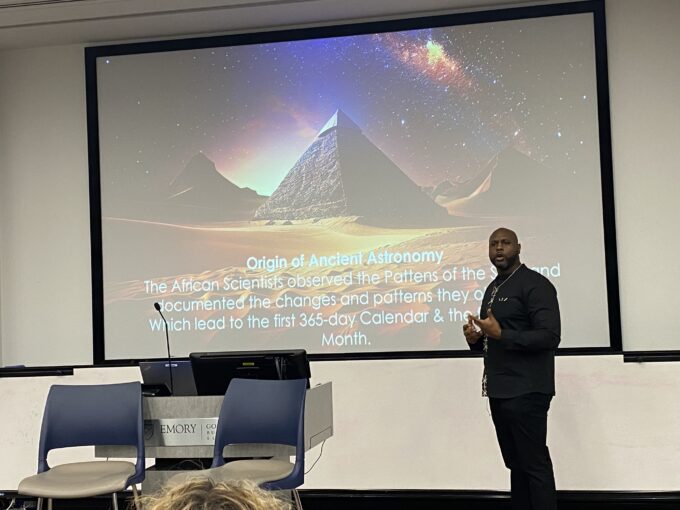Seven African history facts that everyone should know

By African historian, TEDx speaker, and best-selling author Emmanuel Kulu, Jr.
African history is rich and diverse and is as old as time itself. There are so many facts that one can find in the history books or from watching documentaries. African historian, TEDx speaker, and best-selling author Emmanuel Kulu Jr. provides seven interesting facts about Africa.
- Africa, the Origin of Humanity
Renowned British archaeologist Louis Leakey spent his lifetime searching for the origin of the human family. His research and archaeological discoveries led him to the conclusion that humanity sprouted out of East Africa. In addition, according to biblical history, the first mega civilization was Kemet also known as Ancient Egypt. While Egypt has become mostly an Islamic state, its geographical location is in Africa. Therefore, according to science, biology and biblical studies, Africa is the common origin.
- African Women the first Women to Rule
Black African women were the first women in history to rule, to be priests, politicians, and even considered a god. Yes, before the Euro-American women’s liberation movements in the 1800’s, African women descended from the longest list of women rulers in world history. African women played significant roles in the history of the continent, most especially during the pre- and post-British colonial era.

- Kemet (Ancient Egypt) Was a Black African Civilization
Along with the archaeological findings of Afro combs made of ivory, a simple eye study of the ancient Egyptian people in the museums today shows us how they saw themselves. The Ancient Egyptians depicted themselves as melanated Black Africans in hieroglyphics on walls of temples throughout Egypt, according to historical records from Greek writers of antiquity. Herodotus, who is commonly referred to as “the father of History,” was an eyewitness. Based on his observations, he compared the Egyptians, by virtue of their black skin and woolly hair, to the Colchians and Ethiopians (Kushite’s). There are countless other surviving references in Greek literature to the race and complexion of the Ancient Egyptians, from writers as diverse as Aeschylus, Aristotle, Strabo, Ammianus Marcellinus, and Homer who unanimously confirm Herodotus’ observations. Therefore, by unanimous testimony of Greek philosophers, the Ancient Egyptians were Black Africans.
- Kush: Land of the Bow
Kush (modern-day Sudan) has more pyramids than any other country on earth – even more than Egypt. There are at least 223 pyramids in the Sudanese cities of Al Kurru, Nuri, Gebel Barkal, and Meroë. They are generally 20 to 30 meters high and steep. The Sudanese city of Meroë is rich in surviving monuments. Becoming the capital of the Kushite Empire between 590 BC until AD 350, there are 84 pyramids in this city alone, many built with their own miniature temple. The region was also known as “the Land of gold” for land abundance of gold.

- The Origin of Architecture, Mathematics, and Astrology
The Great pyramid of Giza is the largest man-made expression of PI showing that the Kemites originated and pioneered the study of measurements, algebra, and geometry. The Great Pyramid was staggering 481-feet tall – the equivalent of a 40-story building. It was constructed with 2.3 million blocks of limestone and granite, some weighing 100 tons. These Kemitic philosophers also invented the first 365-and-a-quarter-day calendar, based on their documentation and study of the patterns of the stars.
- The Great Wall of Benin
The Guinness Book of Records (1974 edition) described the walls of Benin City and its surrounding kingdom as “the world’s largest earthworks carried out prior to the mechanical period.” It was one of the first cities to have a semblance of street lighting with huge metal lamps, many feet high, built and placed around the city (in the area around present-day Benin City).
Fred Pearce wrote the following about the city in the science magazine New Scientist: “In all, they are four times longer than the Great Wall of China and consumed a hundred times more material than the Great Pyramid of Cheops. They took an estimated 150 million hours of digging to construct and are perhaps the largest single archaeological phenomenon on the planet.” In 1691, the Portuguese ship captain Lourenco Pinto observed: “Great Benin, where the king resides, is larger than Lisbon. All the streets run straight and as far as the eye can see. The houses are large, especially that of the king, which is richly decorated in fine columns. The city is wealthy and industrious. It is so well governed that theft is unknown, and the people live in such security that they have no doors to their houses.”
- Africans pioneered basic arithmetic over 4,000 years ago
The Ishango bone is a tool handle with notches carved into it found in the Ishango region of Zaïre (Congo). The bone was considered to have been over 4,000 years old. On the tool are three rows of notches. Row 1 shows three notches carved next to six, four carved next to eight, ten carved next to two fives and finally a seven. The 3 and 6, 4 and 8, and 10 and 5, represent the process of doubling. Row 2 shows eleven notches carved next to twenty-one notches, and nineteen notches carved next to nine notches. This represents 10 + 1, 20 + 1, 20 – 1 and 10 – 1. Finally, Row 3 shows eleven notches, thirteen notches, seventeen notches and nineteen notches. 11, 13, 17 and 19 are the prime numbers between 10 and 20.
The above text highlights seven interesting facts about Africa, providing insights into its rich history and contributions to humanity. These facts include:
- Africa as the origin of humanity, supported by archaeological and scientific research.
- African women being the first women in history to rule and hold influential positions.
- Ancient Egypt (Kemet) being a Black African civilization, affirmed by historical records and depictions.
- Sudan (Kush) having more pyramids than any other country, emphasizing its historical significance and wealth.
- Africa’s contributions to architecture, mathematics, and astrology, exemplified by the Great Pyramid of Giza and the Kemitic calendar.
- The impressive Great Wall of Benin, surpassing the Great Wall of China in length and material used.
- Africans pioneering basic arithmetic over 4,000 years ago, demonstrated by the Ishango bone.
These facts collectively demonstrate Africa’s deep-rooted history, cultural achievements, and significant contributions to various fields throughout time.
In conclusion, Africa’s history is indeed diverse, complex, and fascinating. It is crucial to recognize and appreciate the continent’s substantial contributions to humanity, which encompass the origin of our species, the empowerment and leadership of African women, the flourishing civilizations of Ancient Egypt and Kush, advancements in mathematics and architecture, monumental architectural achievements like the Great Wall of Benin, and early mathematical prowess demonstrated through the Ishango bone. By understanding and acknowledging Africa’s historical significance, we gain a deeper appreciation for the continent’s rich heritage and its profound impact on human civilization.

